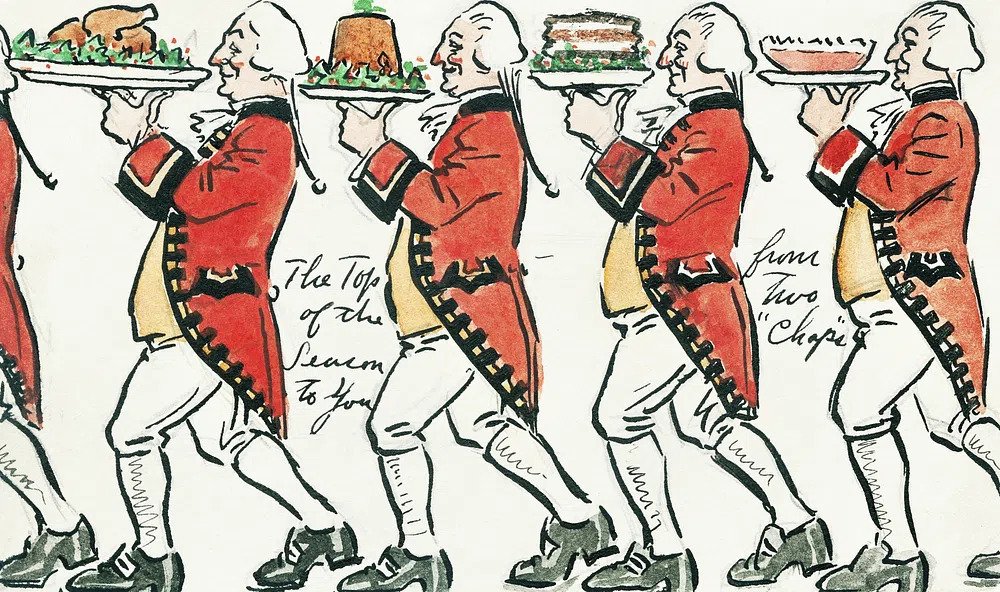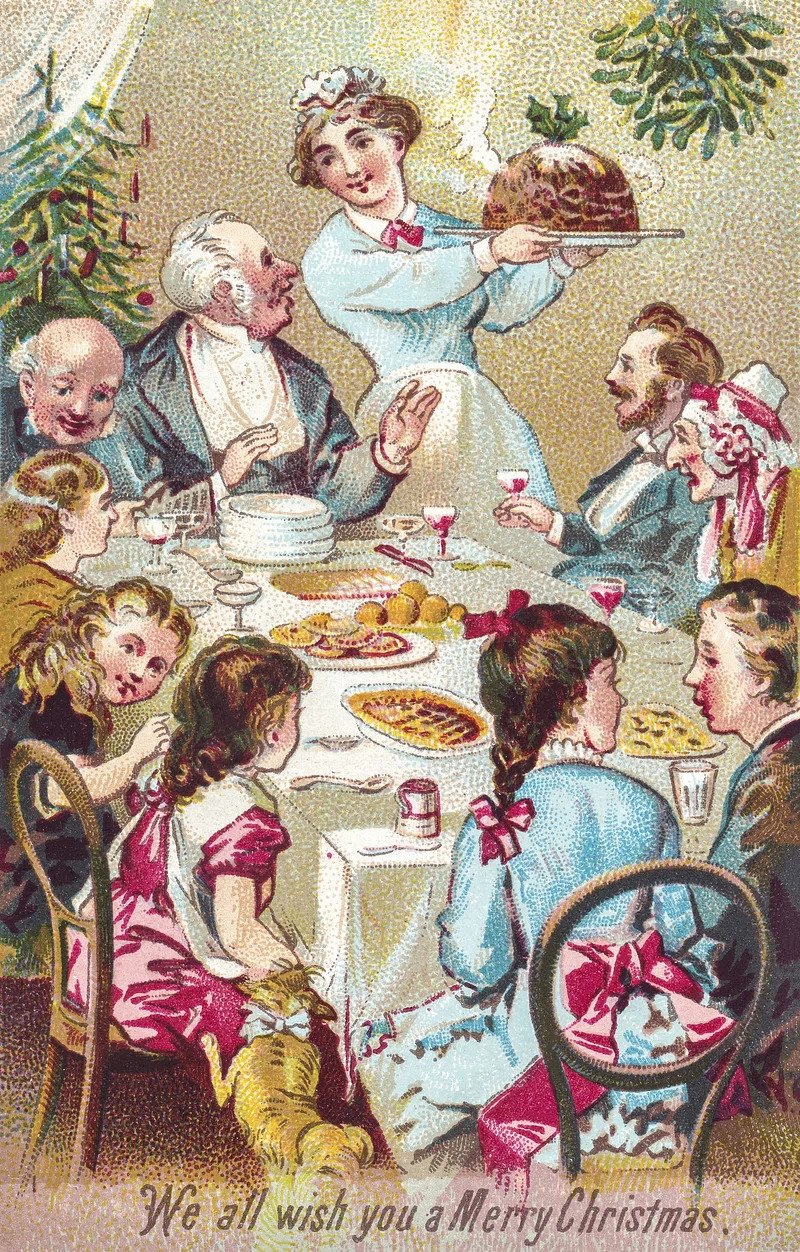The Roast of Christmas Past
Unwrapping the long, strange history of Christmas culinary extravagance

Christmas has always been about food and celebrating the abundance of the land. The dishes we select serve as conduits for love, warmth, goodwill, forgiveness, and optimism, uniting individuals around a communal table.
In reality, Christmas can be a fraught time for many of us. Sibling squabbles, overexcited children (and the inevitable sugar crash that follows), grumpy grandfathers, reluctant cooks, lumpy gravy, … But when we sit down at the dinner table, for one meal, troubles are (mostly) forgotten.
Such a momentous meal deserves a centrepiece that embodies these values, and we would argue that intensively raised meat just won't cut it.
And at risk of infuriating even those most ambivalent about Christmas, we’d also argue that turkey isn’t the be all and end all of Christmas dinners. In fact, historically speaking, it’s the new kid on the block, having only been widely eaten in British households for the last 100 years or so. Before then, it was beef and venison that for centuries most often graced our festive tables, from royalty to the peasantry. There is a reason the French call us ‘les rosbifs’ (roast beef).
It’s said that the abundance of timber and cold climate in the UK meant that fires could burn all day, so as our cooking culture developed, slow-roasted meats became an important part of the cuisine. Unlike in southern Europe where timber was scarcer and food needed to be cooked quickly and efficiently to not waste fuel.
Even our Neolithic ancestors came together for a mighty mid-winter feast. Evidence from archaeological digs at Durrington Walls, located near Stonehenge, has revealed heaps of pig and cattle bones discarded around the dwellings. The pork appeared to have been prepared by roasting it on spits, while the beef was transformed into hearty stews, simmered in sizable pots.
By Tudor times, Christmas had reached another level of decadence. In the royal household, tables would buckle under plates of beef, venison and wild boar, alongside harder to stomach dishes like roasted swan and peacocks. Turkey did start to make its first festive appearance in the gloriously macabre Christmas Pie, made from a pigeon, placed inside a partridge, inside a chicken, inside a goose, inside a turkey, inside a pastry case called a coffin.

The Georgians, Victorians, and Edwardians too favoured beef, mutton, and venison at their Christmas feasts. Food historian Niel Buttery tells us that Christmas pudding would have been served alongside cold meats like beef. Traditionally, dishes like Christmas Pudding and mince pie, which we think of as sweets, were originally made with meat. “Probably there is not a single table spread on Christmas day that is not furnished with roast beef and plum pudding” 1823.
Queen Victoria’s Christmas Day meal reads more like a census of every animal found in Windsor Park than a menu: including boar’s head, turbot, carp, turkeys, lamb, foie gras, venison, glazed ham, chickens, pheasants, mutton, brawn, game pie and woodcock pie.
In the post-war period, the Christmas dinner we know today started to become the norm. As domestic staff and family size declined, the Christmas dinner became limited to one or two courses. Domestic ovens were almost universal and roast dinners were cooked at home, rather than in communal ovens or over an open fire and leftovers could be stored in the fridge.
A combination of advertising, social media and supermarkets have homogenised what we think of as Christmas dinner, anything outside of turkey and trimmings is seen as needlessly controversial. However, as modern tastes and attitudes change and as we become more aware of the impact our food choices have on the environment and society, perhaps we need to embrace some of the diversity of the past. It’s not so much breaking with tradition, but casting our eye back to traditions before gravy granules and M&S Christmas adverts to a time when we were more in tune with our land and food. What better way to do so than with Farm Wilder beef, venison, chicken or lamb, where we can trace the animal back to the field it was born in, the wildflower species that it ate through its life, and the birds that were nesting in the hedges it sheltered beneath.


